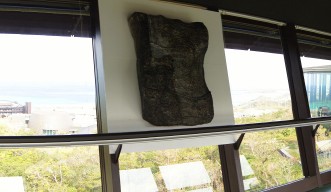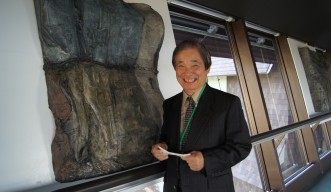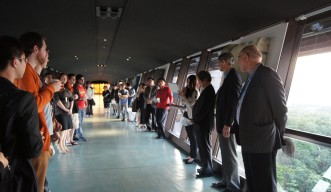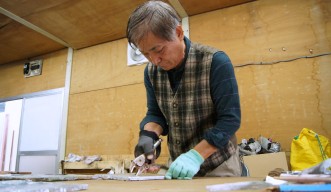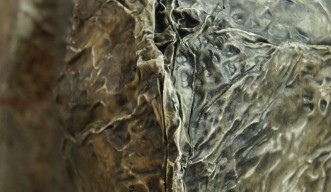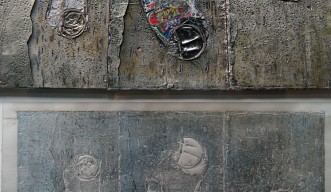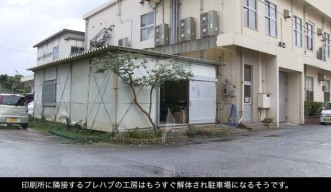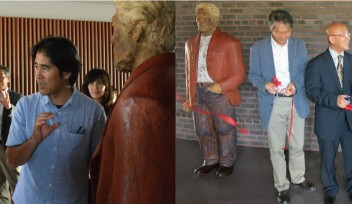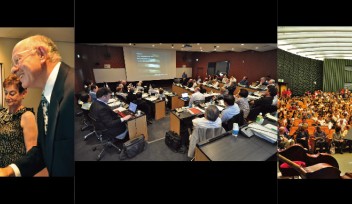Molding Metal
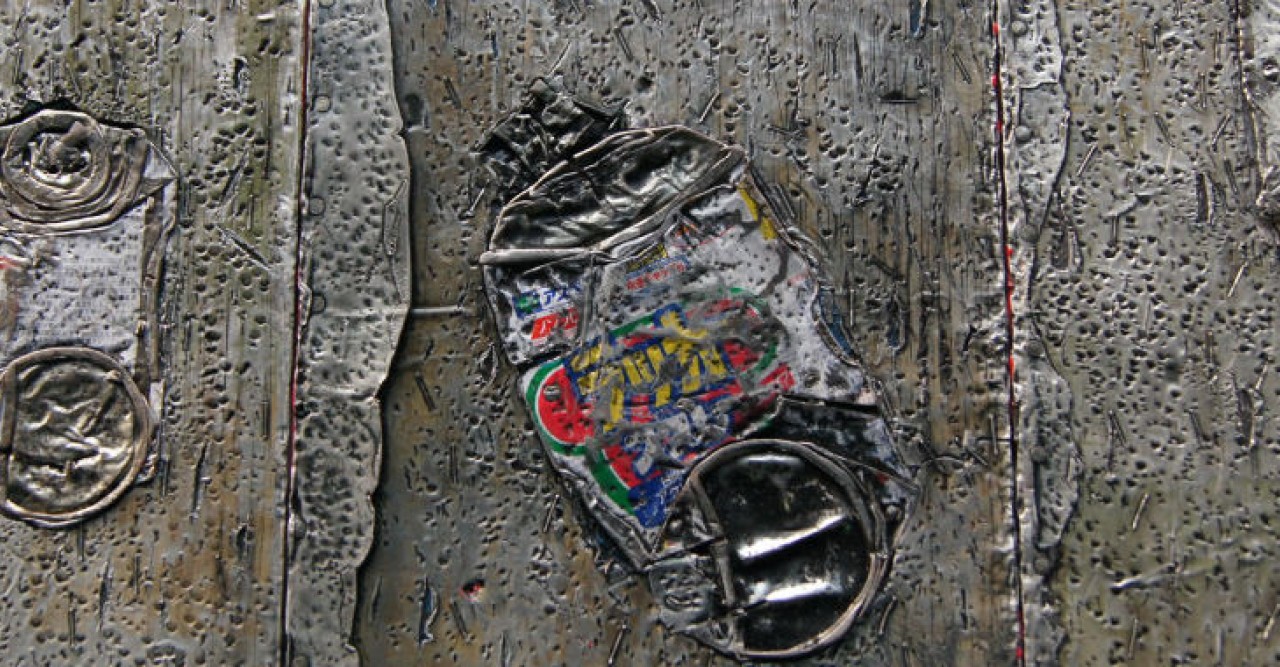
OIST staff and members from the Okinawan Prefectural Museum and Onna Village gathered for the opening exhibition, “Interacting at the Epidermis—a Quest for Identity.” Okinawan artist Akira Miyagi will showcase more than 60 of his repurposed aluminum pieces in OIST’s glass-lined skywalk beginning February 25. The skywalk, which spans a forested ravine, allows splendid views of the East China Sea. “It’s not a space you would normally envision for an art exhibit,” said Miyagi.
OIST Provost Robert Baughman addressed the crowd, which included Miyagi’s 91-year-old mother and his two sisters. “We like to feature Okinawan art and Miyagi’s work has a technical feeling which suits OIST well,” he said, welcoming Miyagi. Miyagi expressed gratitude at displaying his art on the skywalk, and explained he had spoken already through his artwork, posters, and featured video.
Born in Nago in 1945 just after the war, Miyagi grew up in a printing business family. Instead of heading into the industry he took off in an artistic direction. Before recycling was fashionable or even available, Miyagi found a creative way to generate art from the growing piles of the company’s offset aluminum printing plates used to place text and imagery onto paper. His mother remembers him stealing a few plates and throwing them in the back of a truck, but didn’t know what he was doing. “I thought he had started something unimaginable,” she said. With his art he enjoys exploring the boundaries between objects, and his aluminum-plated frames, boxes, and body series express this connection for him.
Miyagi does not create art from scratch he starts with a theme, but has no specific image in mind. Instead a piece will choose him, he said, and directs what it becomes. He prefers used aluminum to new for its pliability and representation of how forms evolve and change through time. From growing up in a post-war environment, many of his pieces express the emotional impacts of war.
He applies a variety of techniques to age the metal. After burning the plates, corroding them and manipulating them with hand tools to fit wooden frames, he occasionally places steel cans or recycled pieces of clothing and metal onto them. After rolling ink into every crevice of these bumpy canvases, he runs them through his old printing press to produce a final impression of his newly recycled creation.
“The excitement of printing is like opening a present,” he said. “I don’t know how it will turn out.” He also incorporates silicone and his own clothing stretched under the aluminum plating to create industrial-looking body sections.
Since the early 1990’s he has placed installations around galleries in Tokyo and Okinawa. If you look up from the ticket counter at the Okinawa Prefectural Museum you can see one of his largest works, measuring at four by eight meters. OIST is Miyagi’s 19th solo exhibition, and his family can still vividly recall his first. Since then “his repertoire of art has changed,” they said, apparent by the numerous pieces adorning their homes. Miyagi also taught art in high schools for 27 years, and at the Okinawa Prefectural University of Arts for three. During the last few years he has held community art classes at his house, where he teaches art and how to make children’s picture books.
“When my father initially heard about building OIST, he thought what a wonderful university that would be,” said Miyagi. Sadly his father passed away recently. “My father would be thrilled that my work will be featured at the university.”
The exhibition will be up until May 10.
For press enquiries:
Press Inquiry Form










